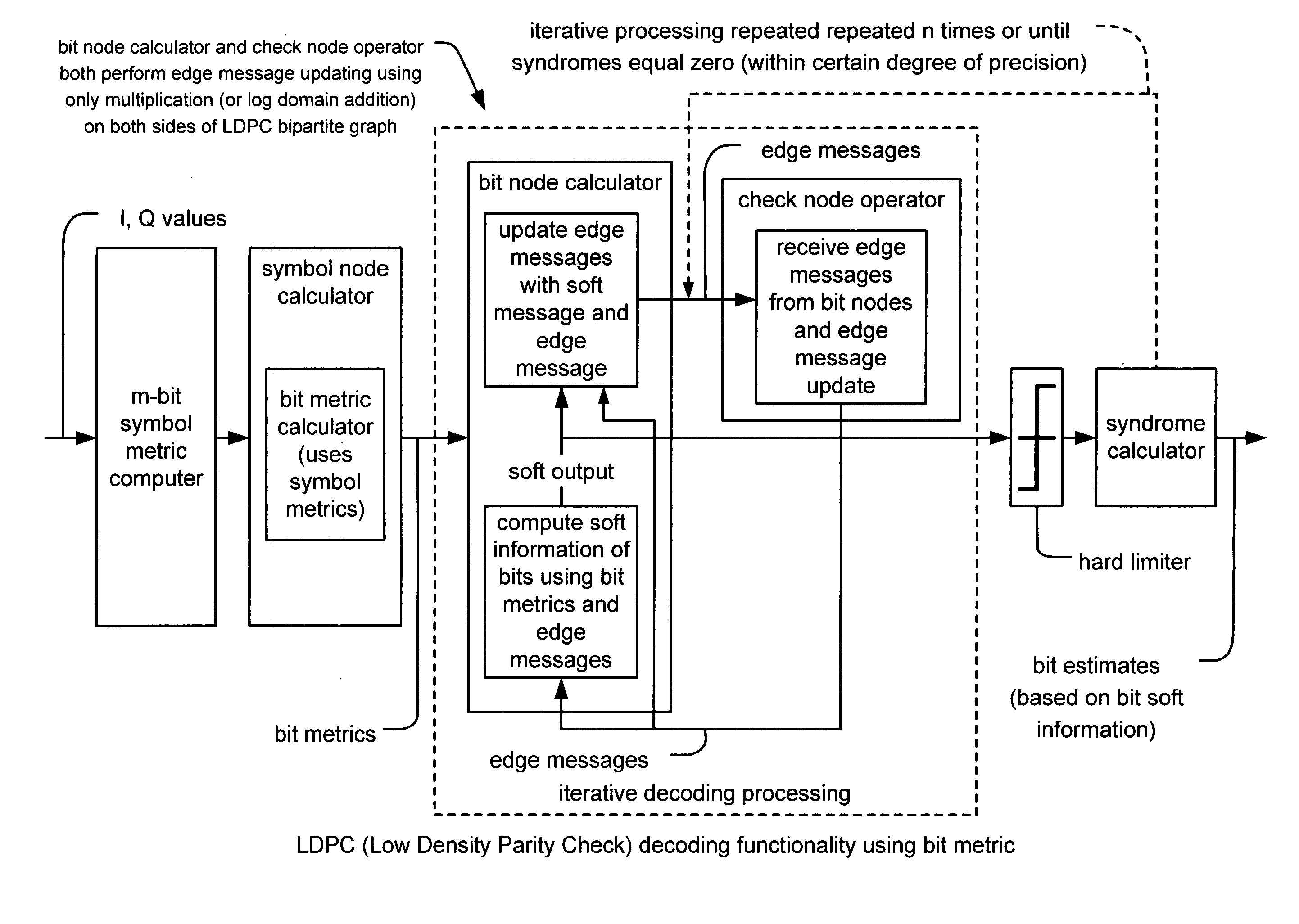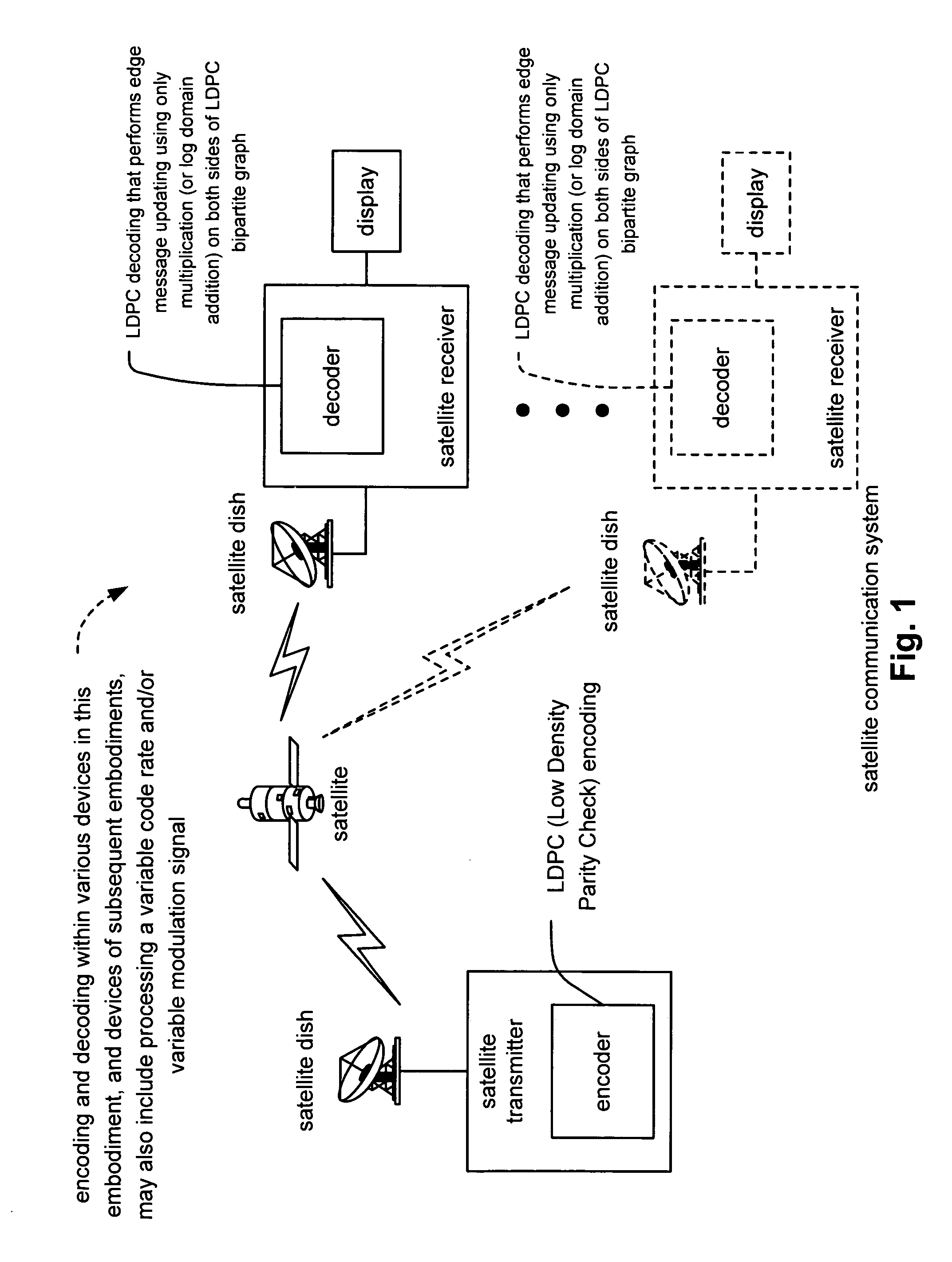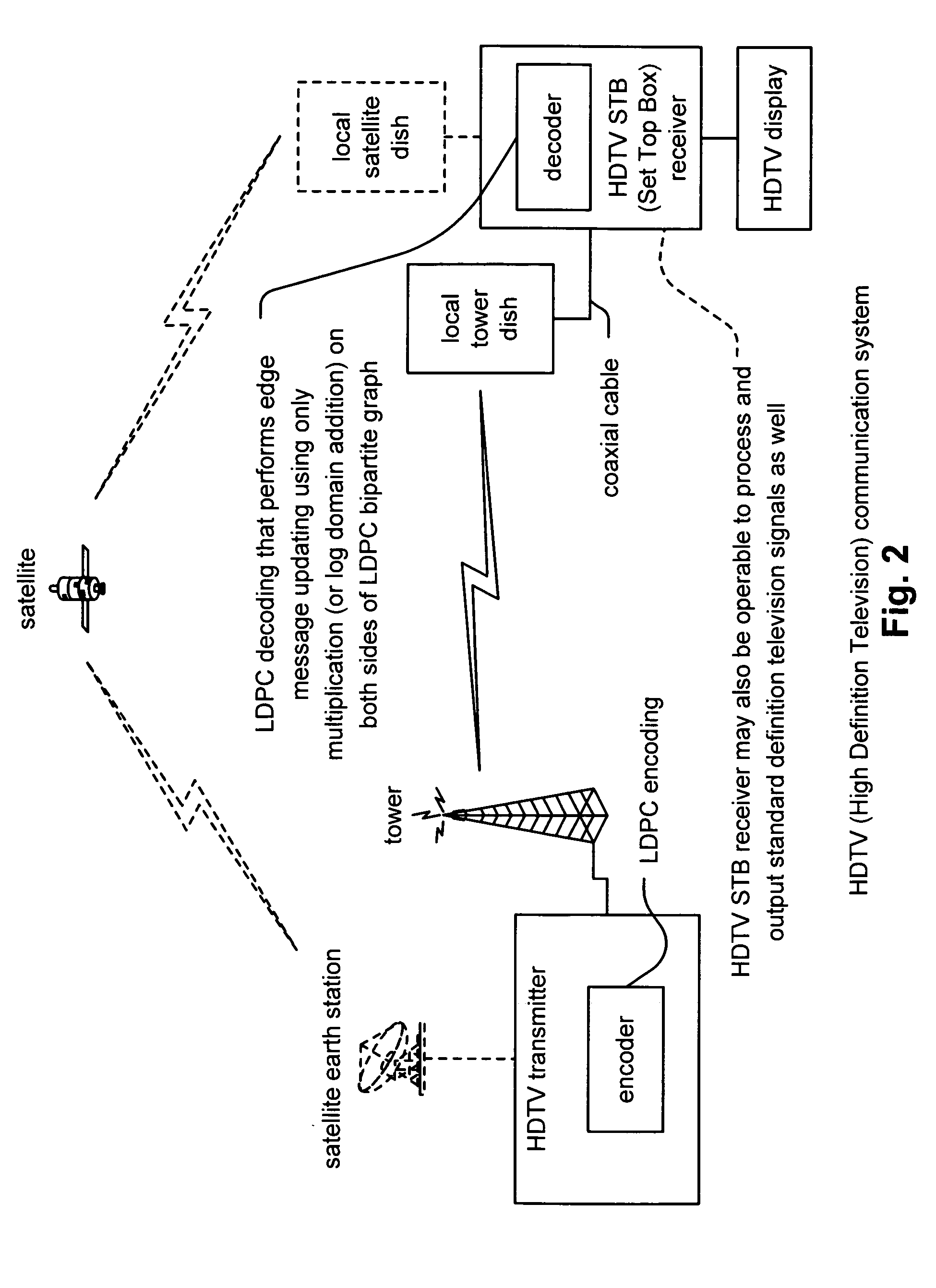Decoding LDPC (Low Density Parity Check) code and graphs using multiplication (or addition in log-domain) on both sides of bipartite graph
a low density parity check and graph technology, applied in the field of communication systems, can solve the problems of increasing the complexity of the hardware employed to implement the decoder, the cost of memory, memory management concerns, and the computational intensity of the updating iteration
- Summary
- Abstract
- Description
- Claims
- Application Information
AI Technical Summary
Benefits of technology
Problems solved by technology
Method used
Image
Examples
Embodiment Construction
[0075]Various decoding aspects of the invention may be found in devices that perform decoding of LDPC (Low Density Parity Check) coded signals such that the updating of edge messages (in the context of the iterative decoding processing) can be performed using more simplified calculations as opposed to the prior art approaches that include using the prior art SPA (sum product algorithm) decoding approach. In contradistinction to the prior art SPA decoding approach that involves calculating the relatively cumbersome and complex calculations that employ a number of different sum of terms functions (e.g., Σ), and then multiplying each of those respective sum of terms functions together using a product of terms functions (e.g., Π), one aspect of the invention involves reducing this computational complex processing (e.g., involving both number of different sum of terms functions (e.g., Σ) and product of terms functions (e.g., Π)) down to a straightforward product of terms function (e.g., ...
PUM
 Login to View More
Login to View More Abstract
Description
Claims
Application Information
 Login to View More
Login to View More - R&D
- Intellectual Property
- Life Sciences
- Materials
- Tech Scout
- Unparalleled Data Quality
- Higher Quality Content
- 60% Fewer Hallucinations
Browse by: Latest US Patents, China's latest patents, Technical Efficacy Thesaurus, Application Domain, Technology Topic, Popular Technical Reports.
© 2025 PatSnap. All rights reserved.Legal|Privacy policy|Modern Slavery Act Transparency Statement|Sitemap|About US| Contact US: help@patsnap.com



